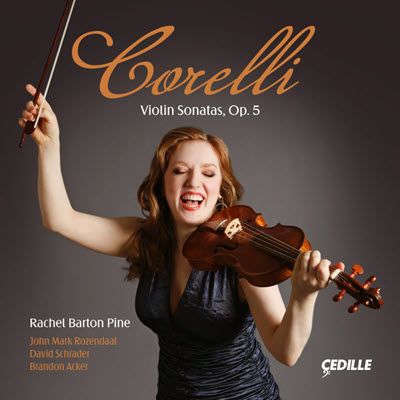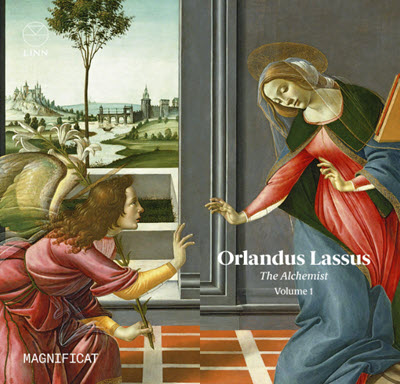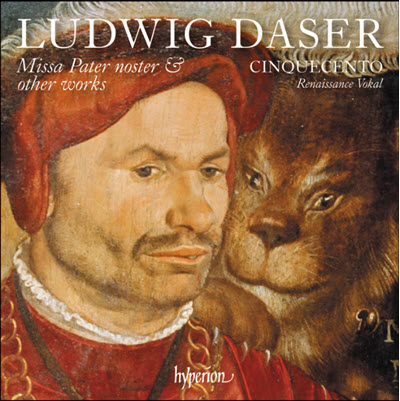by Andrew J. Sammut
Published October 3, 2022
The Galant David Rizzio. Makaris. Olde Focus Recordings FCR921

Call it a productive case of mistaken identity. The New York-centered early-music ensemble Makaris’ new album revisits Scottish song arrangements with a fantastical connection.
Many works published during the 18th-century vogue for Scottish music list the composer as one David Rizzio—despite the fact that this 16th-century secretary to Mary, Queen of Scots, who was murdered after an alleged affair with his queen, had never written a note of music. By some accounts, his ghost still haunts the tower at Holyrood Palace. The liner notes best explain the complicated connection between Rizzio and Galant-era composers and arrangers, but suffice it to say that this fictionalized composer frames a heartwarming, often foot-tapping disc.
The Galant David Rizzio explores a slightly earlier period than the works on Makaris’ debut, Wisps in the Dell (and which included different personnel). The new recording is a beautiful intersection of folk melodies and dance rhythms with the airy textures, refined gestures, and virtuosic asides of the Galant style. Some arrangements sound straight out of the drawing room, like Johann Christian Bach’s scoring of “Beneath a Green Shade,” of graceful vocal lines over oboe and strings. We can imagine the lyrics about who “deserves to be reckon’d an ass” and syncopated hee-haws of “Push About the Brisk Bowl” scandalized some listeners.

Other pieces bridge the salon and saloon. “The Broom of Cowdenknowes” blends Celtic twang with an elegant but bittersweet melody. The Italian influence on the English musical scene is also on display, for example, in the florid violin introducing Geminiani’s setting of “The Lass of Peaty’s Mill” or the instrumental recitative in “The Last Time I Came O’er the Moor.”
Fiona Gillespie connects everything through her assured, responsive lead vocals. “An Thou Were My Ain Thing” shows off her focused soprano and sheer warmth of tone. For “Bessy Bell and Mary Gray,” her voice takes on a steely, trance-like quality as she mourns plague victims. Then, her trills and aspirated phrases on “Fickle Jenny” convey frustration alongside flirtation. She also brings out the musicality of the Scottish accent, like the elongated vowels recalling a beloved’s “smooth” skin or the “mither” she ejects in comic defiance of her parent’s chosen suitor.
The instrumentalists match Gillespie in sensitivity and command of this repertoire, settling into the range of texture, moods, and grooves across 26 tracks. Several instrumentals—including imaginative original arrangements by band members—highlight the tight interplay that translates into a spontaneous feel. “The Flowers of Edinburgh” downright swings in violinist Caitlin Hedge’s arrangement of this traditional reel. Paul Morton and Doug Balliett’s arrangement of “William’s Ghost” combines metallic plucks on cittern over bass and harpsichord, to spectral effect.
Solos and obbligatos also highlight individual ensemble members. Hedge’s varied tone and animated ornaments make for a refreshing interpretation of the “Tweed Side” variations from Veracini’s Violin Sonata in A Major (Op. 12, No. 9, III. “Scozzese”). Sian Ricketts’s oboe and recorder adds color in pastoral settings, raucous commentaries, and wistful asides. Violinist Manami Mizumoto joins Hedge for a sparkling trio sonata to start James Oswald’s collection of dances from the pantomime Queen Mab, which closes the disc with a whirling jig for the whole ensemble.
Oktaven Audio of Mount Vernon, New York, puts the sound up close and personal, maintaining the music’s immediacy and balance. Cellist/bass violist Kivie Cahn-Lipman’s program notes succinctly explain Rizzio’s story as well as the Gaelic terms and references in the texts. In short, the whole album is a success—and one of this reviewer’s favorite releases of 2022.
Andrew J. Sammut has written for All About Jazz, The Boston Classical Review, The Boston Musical Intelligencer, Early Music America, The Syncopated Times, and his blog. He also works as a freelance copyeditor and writer.
More CD Reviews:




